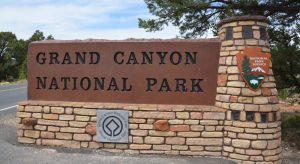
With President Biden’s plans to visit Arizona, New Mexico and Utah this week, sources speculate that the purpose of the trip is to designate a new national monument protecting lands outside the Grand Canyon National Park, according to a recently published report by E&E News.
Speaking on conditions of anonymity, no further details were immediately available about the site’s footprint or whether it would include the full amount of acres sought by Native American tribes. The White House has not yet provided further details about the trip.
The Washington Post was the first to report about the likely monument designation on Friday. It would mark a major victory for Arizona lawmakers, tribes and conservation advocates who have urged Biden to protect the lands, which they argue need to be shielded from possible uranium mining in the area.
Leaders from a dozen Native American tribes have been pushing for years to protect lands around the Grand Canyon in northern Arizona that are managed by the Forest Service and the Bureau of Land Management.
The Baaj Nwaavjo I’tah Kukveni Grand Canyon National Monument they want to see created includes about 1.1 million acres of land.
The Obama Administration implemented a 20-year ban on new mining in the area. A monument would make protections permanent.
Numerous Native American tribes consider the lands at issue as culturally significant. Baaj Nwaavjo means “where tribes roam” for the Havasupai Tribe, and I’tah Kukveni means “our footprints” for the Hopi Tribe, according to a monument fact sheet circulated by Arizona Rep. Raúl Grijalva.
Grijalva, the top Democrat on the Natural Resources Committee, and Sen. Kyrsten Sinema (I-Ariz.) in April urged Biden to use his executive authority to establish the national monument.
In addition to its cultural significance, the area is also at the headwaters of a significant Colorado River watershed and provides important habitat for endangered species like the California condor and a pathway for numerous species of migratory birds and wildlife, the fact sheet noted.
“I feel strongly that that is possibly one of the most important things that can happen in the next few months or so,” said Rep. Grijalva.
Interior Secretary Deb Haaland toured the Grand Canyon’s South Rim in May with staffers from Grijalva and Sinema’s offices. They met with tribal leaders, local elected officials and community members.
A spokesperson for the White House Council on Environmental Quality did not respond to a request for comment.
The National Mining Association criticized the expected designation in a statement Friday.
“If any doubts remained about the Biden Administration’s stance on domestic mining, this unwarranted withdrawal puts them to rest,” said Ashley Burke, a spokesperson for the National Mining Association.
“By continuing to block mineral rich lands from responsible mining, this administration is imperiling our supply chains, robbing U.S. communities of high-paying jobs and community-supporting revenues, and enriching our adversaries,” said Burke.
The new monument would be the fifth created by President Biden. Last October, he designated his first national monument: the Camp Hale-Continental Divide National Monument in Colorado. In March, Biden designated two more: the 506,814-acre Avi Kwa Ame National Monument in Nevada, which protects mostly BLM-managed lands that are considered sacred to Yuman-speaking Native American tribes and the 6,672-acre Castner Range National Monument on an old Army weapons testing range in El Paso, Texas.
Last week, President Biden signed a proclamation creating the Emmett Till and Mamie Till-Mobley National Monument, comprised of three separate sites in Illinois and Mississippi.





